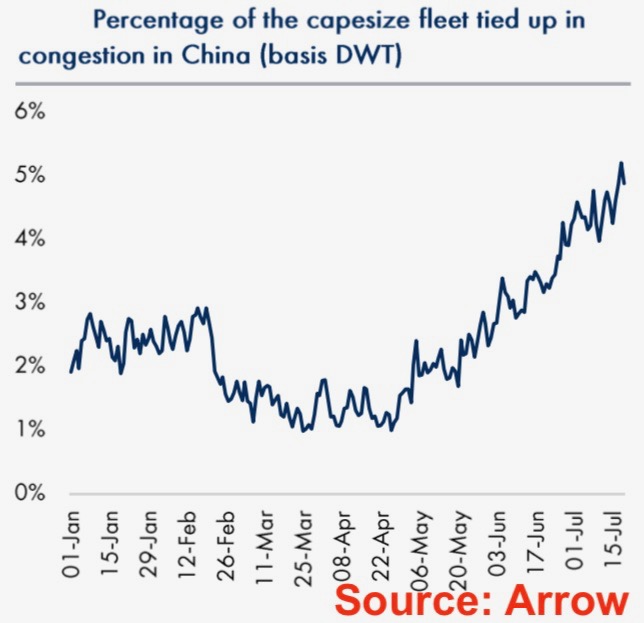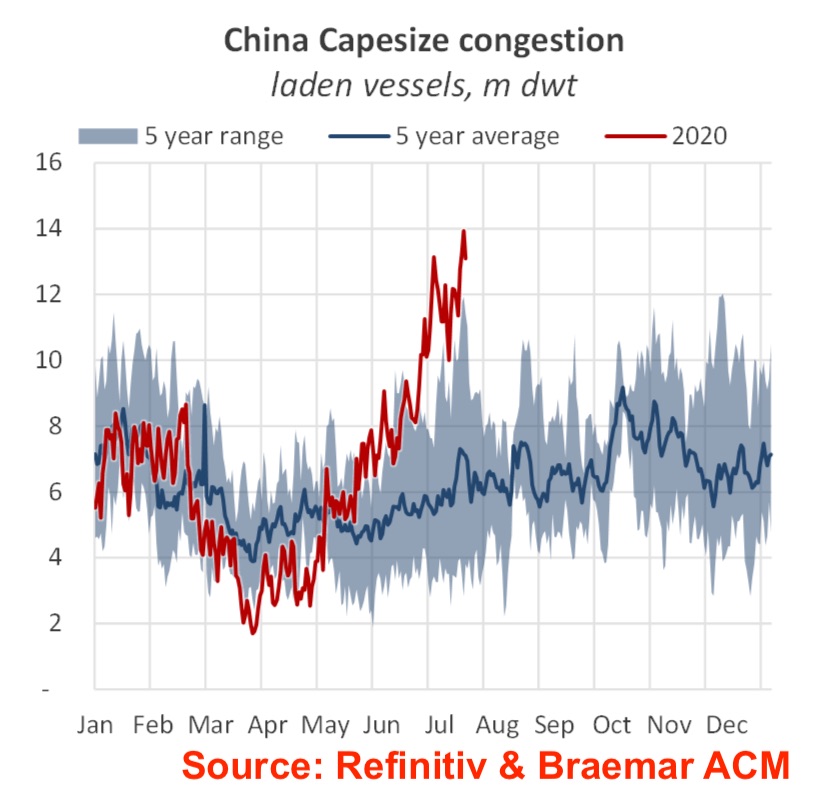Chinese port congestion approaching record levels

Chinese port congestion is approaching record levels thanks to rampant demand, dire weather and slower operations because of Covid-19 protocols.
For capesizes, Breakwave Advisors estimated earlier this week 7% of the global fleet is currently stuck in ports, a number that is double the level compared to a few years ago.
Braemar ACM notes that at the start of this week, the volume of laden capesize tonnage waiting to discharge in China reached 13.9m dwt – the highest level the company has recorded since AIS records began, representing a near four-fold increase on average congestion during July 2019. This translates to 71 ships, or around 3.9% of today’s trading fleet.
If it weren’t for the congestion in China, cape rates would have been much softer than they are at the moment
Of the capesize iron ore voyages which have completed discharges in China this month, vessels spent on average almost four days waiting on arrival before coming alongside, according to Braemar ACM. This compares to an average of around 1.5 days over July 2019.

“If it weren’t for the congestion in China, cape rates would have been much softer than they are at the moment,” brokers Arrow suggested in a report issued yesterday.
Arrow pointed out the torrential rains seen in the south of the country – about 20% higher than normal for this time of the year – are forecast to continue for a few more days.
Congestion is especially acute along Yangtze River ports, according to analysis from Singapore-based Eastport Maritime.
The congestion issue in China is also keenly felt in the tanker trades as Beijing has gone on a buying binge of cheap oil in recent months. As of July 23, about 120m barrels of crude were waiting off Chinese ports to discharge, up from around 80m barrels in early July, data from Refinitiv showed yesterday.
Refinitiv estimates the average waiting time for tankers to discharge is three to four weeks for vessels in the Qingdao-Rizhao area and around two weeks in Ningbo-Zhoushan and other major ports, against normal discharge times of around a week.

